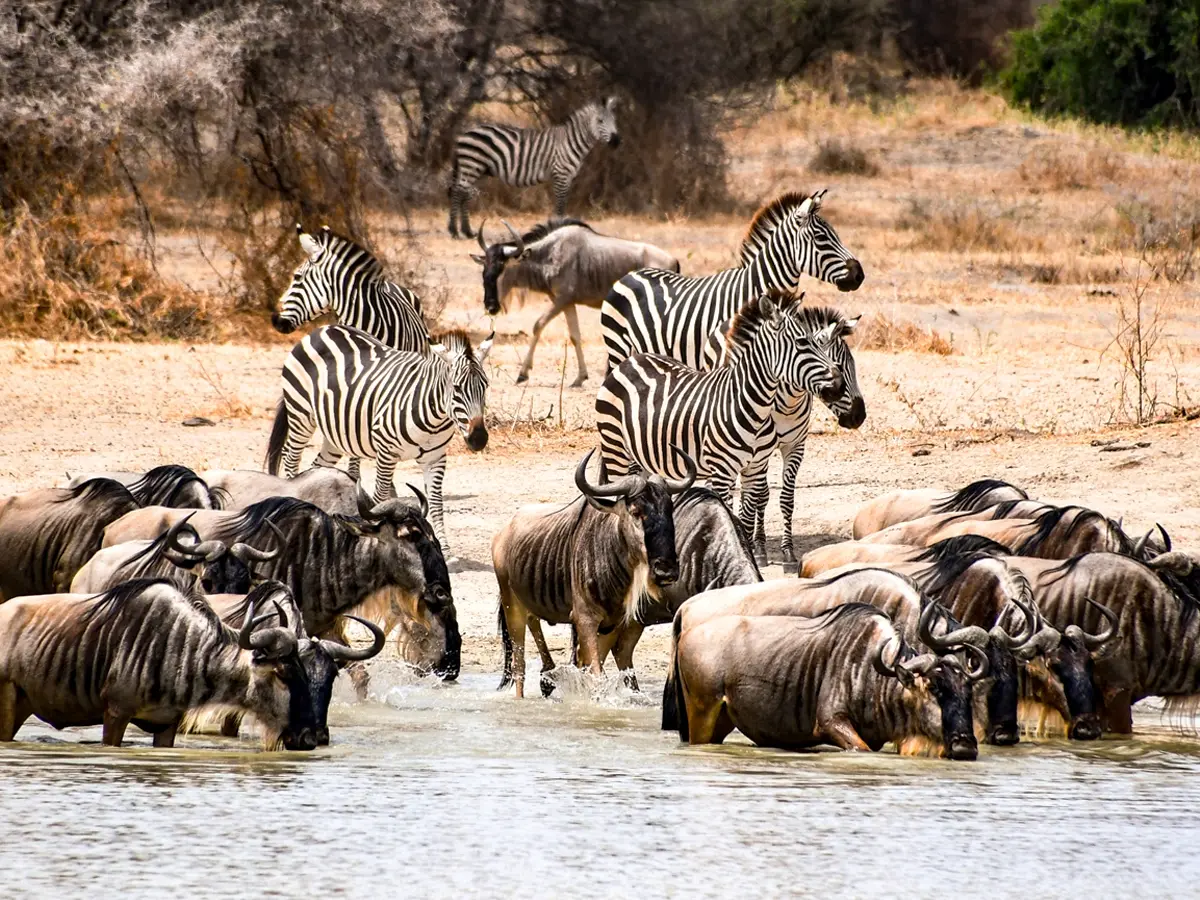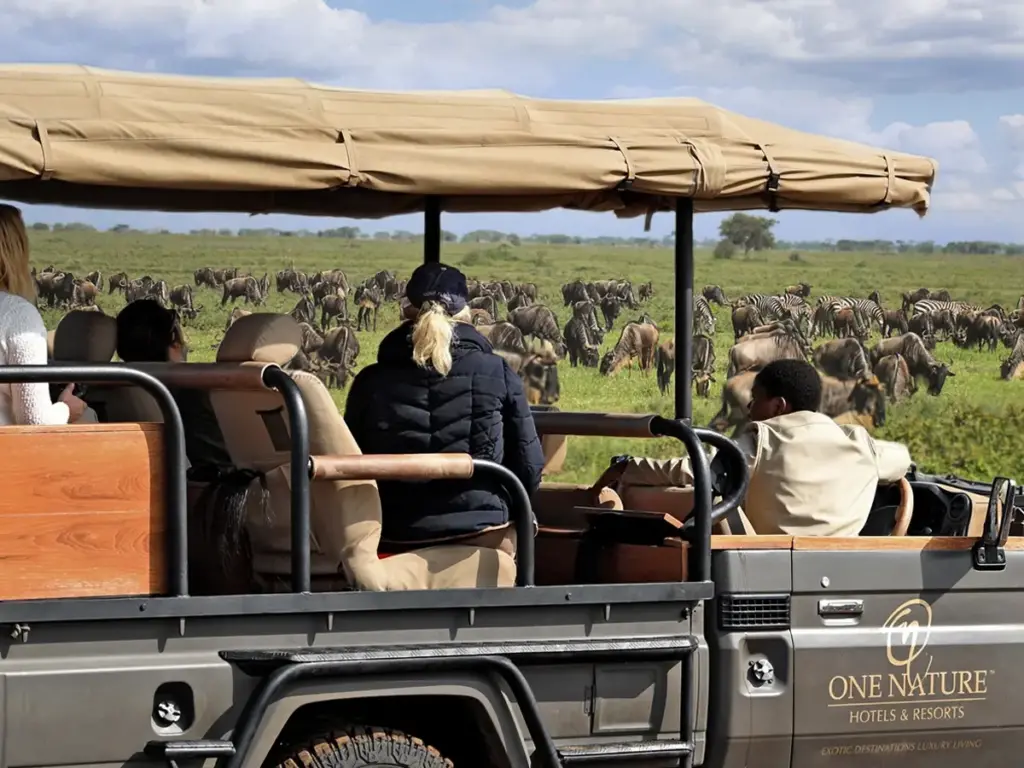
In the heart of Tanzania’s stunning savanna, an awe-inspiring sight unfolds each year as millions of wildebeest and zebras embark on their legendary migration. This natural phenomenon is not just a spectacle; it is a testament to the intricate symbiotic relationship between these two iconic species.
Join us as we delve into the reasons behind their synchronized journey, their complementary roles in the ecosystem, and the remarkable ways they work together to navigate the challenges of the African wilderness.

The migration of wildebeest and zebras is a marvel of nature, driven by a combination of factors including the search for food, water, and breeding grounds. But why do these two species choose to travel together? The answer lies in their complementary grazing habits and the safety-in-numbers strategy.
While wildebeests are primarily grazers, consuming coarse vegetation, zebras are pickier browsers, favoring tender shoots and leaves. Both wildebeest and zebras are primarily grazers, feeding on grasses and other vegetation found on the savanna. They also exhibit browsing behavior, particularly during times of scarcity when they may feed on leaves, twigs, and shrubs. This flexibility in their feeding habits allows them to adapt to changing environmental conditions and ensures their survival in the challenging African wilderness.
By traveling together, they ensure that they can access a variety of food sources while also protecting each other against predators. Zebras, with their keen senses, act as sentinels, alerting the herd to potential dangers, while wildebeests, with their instinctive herding behavior, offer additional security through their sheer numbers.
The symbiotic relationship between wildebeest and zebras goes beyond mere cohabitation; it is a mutually beneficial partnership that shapes the ecosystem of the African savanna. As grazers and browsers, they play crucial roles in maintaining the balance of plant life, preventing any one species from dominating the landscape.
Their combined presence also benefits other wildlife, as their grazing activities create opportunities for smaller herbivores and birds to feed on the vegetation that they leave behind. In essence, the wildebeest and zebra form the backbone of the savanna ecosystem, supporting a diverse array of flora and fauna through their symbiotic interactions.

The annual migration of wildebeest and zebras is a remarkable journey that spans thousands of kilometers across the plains of Tanzania. This epic odyssey is driven by the changing seasons and the availability of food and water.
As the dry season approaches, the herds begin their journey toward the lush grasslands of the Serengeti, where they will graze and give birth to their young. Along the way, they must navigate treacherous rivers, evading hungry Nile crocodiles and other predators. Despite the challenges, the migration is a testament to the resilience and adaptability of these remarkable animals, as well as the enduring power of nature.
Tanzania is home to some of the most iconic wildlife habitats on the planet, including the Serengeti National Park and the Ngorongoro Conservation Area. These protected areas provide crucial sanctuary for wildebeest and zebras during their migration, offering ample grazing opportunities and protection from human encroachment and poaching. Visitors to Serengeti National Park, Tanzania have the opportunity to witness the spectacle of the Great Migration firsthand, as vast herds of wildebeest and zebras thunder across the plains in search of greener pastures.

Through their synchronized migration, complimentary grazing habits, and mutualistic interactions, wildebeests and zebras shape the ecosystem in profound ways, supporting a diverse array of flora and fauna. As we strive to protect the natural wonders of Tanzania and other wildlife habitats, let us remember the vital role that wildebeest and zebras play in maintaining the delicate balance of nature. Experience the wildlife wonders of Tanzania’s Serengeti with an unforgettable safari at One Nature Lodges.